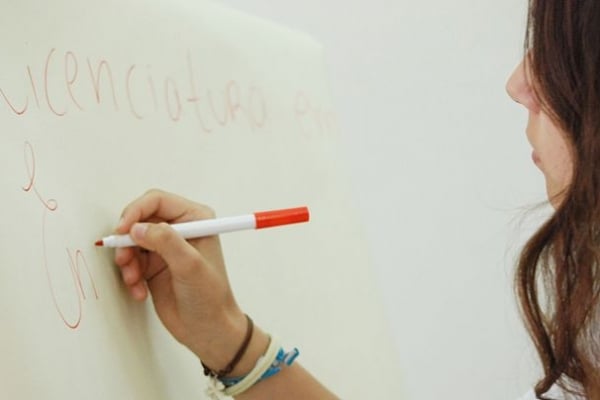Teaching Content to Language Learners: Creating Order in Chaos

Teaching content to a classroom with diverse language proficiencies can feel overwhelming. We feel the pressure for our language learners (ELs) to gain more vocabulary, increase their linguistic complexity, and eliminate errors – all while they learn the class material! Here is some background information that will help you implement Jessica Weaver’s suggestions from a previous OnPractice article.
Expand knowledge of the language acquisition process. Understanding how language is learned provides a foundation for instruction that is comprehensible and for creating assessments that accurately reflect content knowledge instead of language proficiency. WIDA.us, TESOL.com, and the Council of Europeare excellent resources for this.The progression of language acquisition might look/sound like the following…
 Lesson plans, activities, materials, and assessments can be geared toward the proficiency level(s) of your students for each of the modalities (listening, speaking, reading, writing.)
Lesson plans, activities, materials, and assessments can be geared toward the proficiency level(s) of your students for each of the modalities (listening, speaking, reading, writing.)Plan lessons with both learning targets and language targets. Lessons with language goals help move the student to the next level of language proficiency while they are learning content.
 Colorin’ Colorado and SIOP provide examples of language objectives, as well as lesson plans with learning and language targets.
Colorin’ Colorado and SIOP provide examples of language objectives, as well as lesson plans with learning and language targets.Focus on key objectives. In a classroom with multiple levels, it is necessary to focus on the key learning objectives and eliminate information that does not meet the objective. Language targets also keep the focus on which language mistakes to correct.
Make connections. Experiencing content and seeing visuals allow students to gain knowledge without a heavy language load. Effective teachers seek ways to connect to students’ prior knowledge, while building background. Cross-curricular theme-based units with many activities allow students multiple opportunities to interact with information and language.
Teach vocabulary. Language learners benefit from vocabulary instruction across the curriculum, particularly instruction that focuses on frequently-used, academic terms that appear across a variety of classes (Tier Two), such as coincidence, reluctant, or analysis. The six-step process[1] (Marzano, 2004) for teaching vocabulary includes:
- Teacher provides a description, explanation, or example of the new word.
- Students restate the definition in their own words.
- Students construct a non-linguistic representation.
- Students interact with the words to deepen their knowledge (comparing, classifying, writing analogies/metaphors.)
- Students discuss the terms.
- Students play games with the words.
Provide supports. Anything that enhances learning and/or lightens the language load is a support. Support for students using new structures, grammar, vocabulary include word boxes (including Tier 2) and sentence frames. Sentence frames provide the structure for producing language, such as the ones below that supply responses for both comparing and contrasting.

Make accommodations. The sky is the limit when it comes to accommodations. Common accommodations used regularly by classroom teachers at ECA are:
- bi-lingual dictionaries and Bibles
- referencing to L1
- note-taking using a print-out of the teacher’s PowerPoint
- pictures, diagrams, charts, graphic organizers
- eliminating choices on multiple choice tests
- cloze/fill-in-the-blank for both notes or assessments
Check with your school administration to see if you need to differentiate between changes that lighten the language demand (accommodations) and changes that actually alter the learning expectations (modifications)[2].
Take a deep breath! Language acquisition is a process. Relax and enjoy the ride!
Lynette Sorensen
ELL Coordinator, ECA Spain
TeachBeyond
[1] Marzano, R. J. (2004). Building background knowledge for academic achievement: Research on what works in schools. Alexandria, VA: ASCD.
[2] For a more in-depth discussion on accommodations versus modifications, check out the posting on this topic in the TEFL Idea Exchange group on Yammer.
Photo Credit: Students on Task. USEmbassyPhnomPenh Flickr via Compfight cc.



